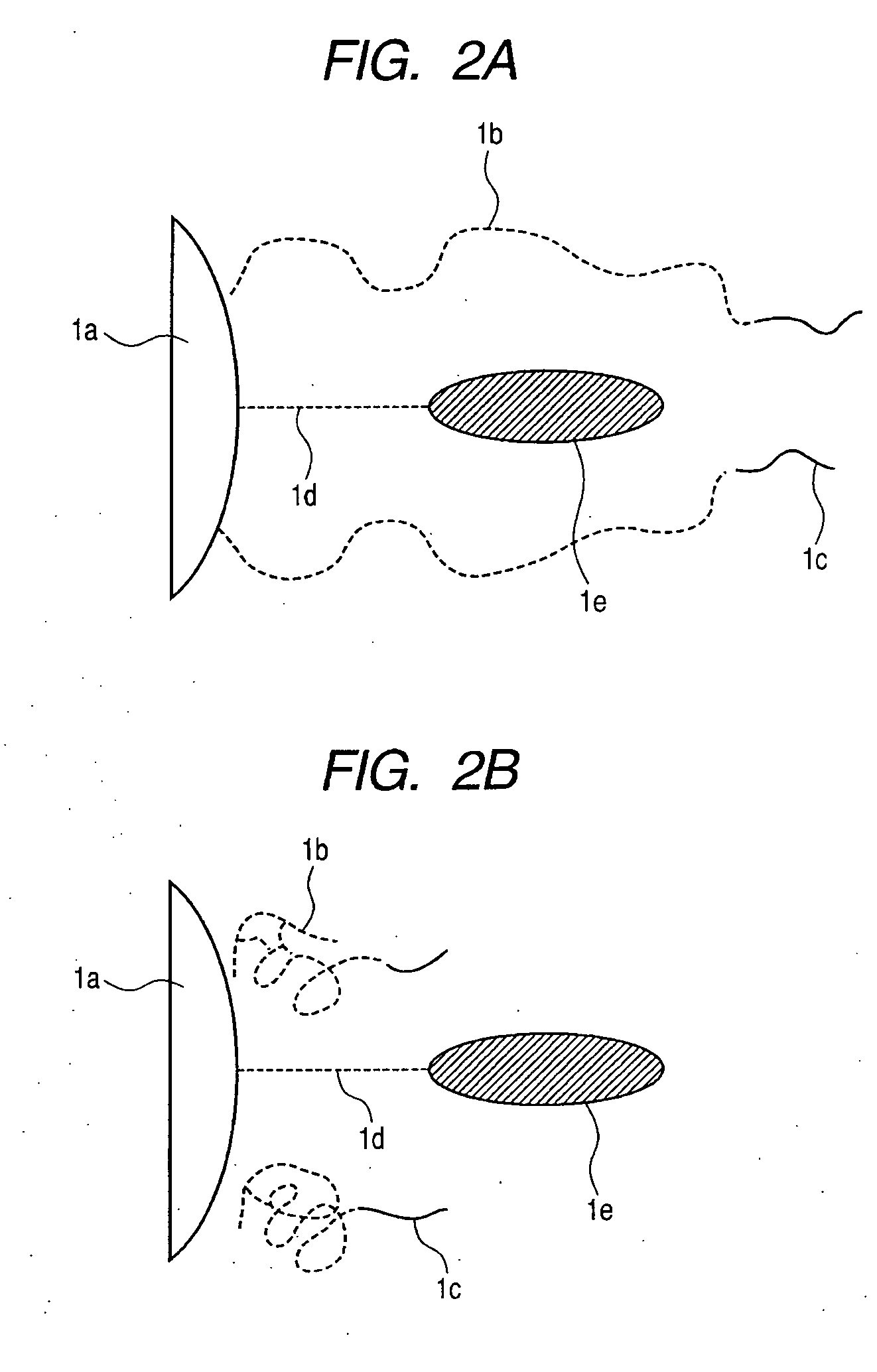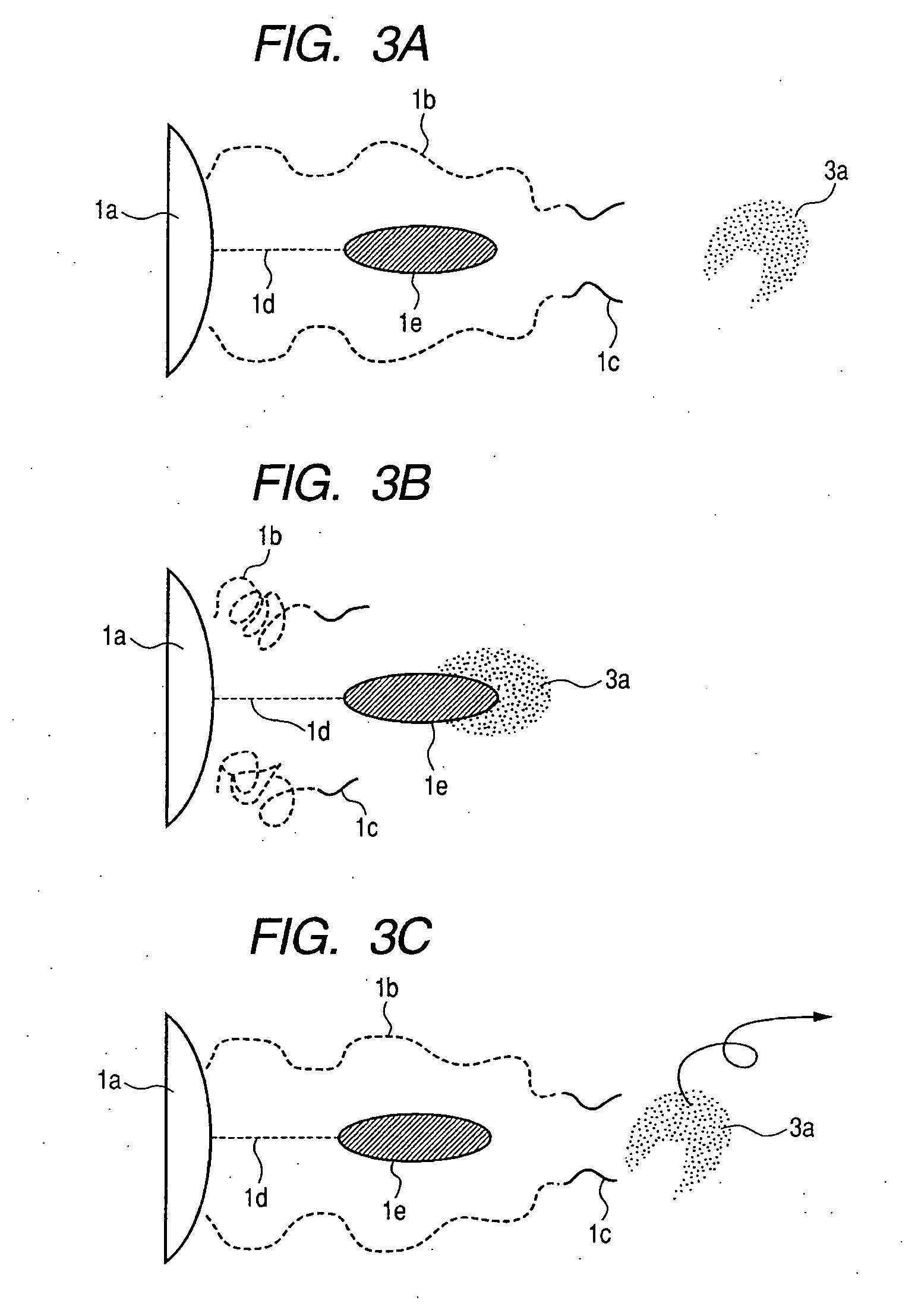Structure for separation of physiologically active agent and method for recovering physiologically active agent
a physiologically active agent and structure technology, applied in the field of structure for separation a recovery method can solve the problems of reduced activity reduced inactivation of physiologically active agents, and complicated operation
- Summary
- Abstract
- Description
- Claims
- Application Information
AI Technical Summary
Benefits of technology
Problems solved by technology
Method used
Image
Examples
example 1
[0047] In this Example, a method for manufacturing a structure illustrated in FIG. 1 will be described and the structure is evaluated for performance of separating / recovering a physiologically active agent. In the Example, a block polymer is introduced into a substrate by immobilizing a free block polymer previously synthesized onto the surface of a substrate.
[1-1] Synthesis of a Block Polymer
[0048] A reaction solution is prepared by adding PEO with a brominated terminal (Mn: 1000, Mw / Mn: 1.1), N-isopropyl acrylamide (NIPAM), CuCl, tris[2-(dimethyl amino)ethyl]amine (Me6TREN), and dimethylformamide (DMF) to a schlenk reaction tube. Vacuum deaeration is performed under a freeze condition to remove oxygen in the schlenk tube and atomic transfer radical polymerization (ATRP) is allowed to proceed room temperature. After a lapse of a predetermined time, a large amount of mercaptoacetic acid is added to the reaction system to carboxylate the end of a block polymer to be produced. The ...
example 2
[0056] In this Example, a method for manufacturing a structure illustrated in FIG. 1 will be described and the structure is evaluated for the performance of separating / recovering a physiologically active agent. In the Example, a block polymer is introduced into a substrate by introducing a functional group into the surface of the substrate and performing grafting polymerization using the functional group as an initiator seed.
[2-1] Pretreatment of a Substrate
[0057] Silica beads are washed with concentrated nitric acid and collected by filtration. The silica beads thus collected are heated at 135° C. for 5 hours under a dry nitrogen atmosphere and then dispersed in anhydrous toluene. To the silica beads dispersed in toluene solution, 2-(4-chloromethylphenyl)ethyl trimethoxy silane serving as a silane coupling agent is added and reacted with a hydroxyl group on the surface of the silica beads. In this manner, chloro-methylation is performed. The progress of the reaction is confirmed...
PUM
| Property | Measurement | Unit |
|---|---|---|
| Temperature | aaaaa | aaaaa |
| Critical solution temperature | aaaaa | aaaaa |
| Hydrophilicity | aaaaa | aaaaa |
Abstract
Description
Claims
Application Information
 Login to View More
Login to View More - R&D
- Intellectual Property
- Life Sciences
- Materials
- Tech Scout
- Unparalleled Data Quality
- Higher Quality Content
- 60% Fewer Hallucinations
Browse by: Latest US Patents, China's latest patents, Technical Efficacy Thesaurus, Application Domain, Technology Topic, Popular Technical Reports.
© 2025 PatSnap. All rights reserved.Legal|Privacy policy|Modern Slavery Act Transparency Statement|Sitemap|About US| Contact US: help@patsnap.com



